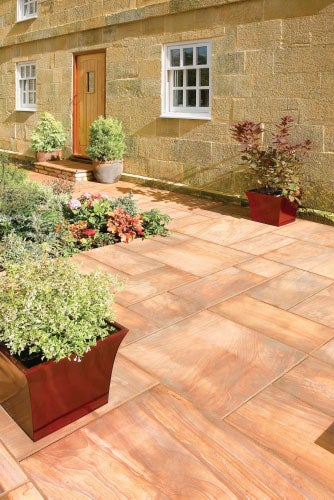Cost Of Living :Building a patio

Your support helps us to tell the story
From reproductive rights to climate change to Big Tech, The Independent is on the ground when the story is developing. Whether it's investigating the financials of Elon Musk's pro-Trump PAC or producing our latest documentary, 'The A Word', which shines a light on the American women fighting for reproductive rights, we know how important it is to parse out the facts from the messaging.
At such a critical moment in US history, we need reporters on the ground. Your donation allows us to keep sending journalists to speak to both sides of the story.
The Independent is trusted by Americans across the entire political spectrum. And unlike many other quality news outlets, we choose not to lock Americans out of our reporting and analysis with paywalls. We believe quality journalism should be available to everyone, paid for by those who can afford it.
Your support makes all the difference.While decking and lawns both require regular maintenance a patio – if properly built – will last, untended, for decades. What may appear to be a daunting task, better left to professionals, is not in fact beyond the realm of mere mortals. And if you are perturbed by the size of the job just think of the money, time and tea you'll save.
Where you position your patio will be dictated by the size of your garden – a larger one allows for more considerations. The two obvious choices are: adjoining the house – ideal for a barbecue area – or removed from it – which, when allotted with careful positioning of plants, could offer you a secluded retreat.
Mark out an area using pegs and lines ensuring that the distance measured between corners is equal. The colour and design of your patio should reflect the architecture of your home – you want it to complement rather than conflict with your property. There are numerous varieties of stone to choose from but sandstone and slate are good options as both give tasteful and natural finishes.
The patio's foundations are essential. They will prevent tiles from shifting and sinking and most importantly ensure the surface remains level. Excavate a depth of approximately 6ins over the patio area. If the patio will be touching the house make sure it finishes 150mm (5ins) below your damp course.
A layer of hardcore – broken rocks and debris – should be topped by concrete, in which the tiles will be set into. You will need to hire a compacting machine from a rental store to compress the hard core, which needs to feel solid underfoot when complete. Lay the tiles on top of the concrete two at a time so that you can always measure them against each other to ensure they are straight.
Once the slabs are laid pour sand over the surface and sweep it into the gaps. If you repeat this once a year you will deter weed-growth and the movement of any tiles.
What it costs:
Natural stone patio pack – £30.99 per square metre (VAT and delivery included)
Sand and hardcore – £44.99 per bag
Simply Paving (www.simplypaving.com; 0800 032 6306)
Small cement mixer – £16.50 a day, £27.50 a week
Plate compactor – £33.90 a-day, £56.50 a-week
Hire Station (www.hirestation.co.uk; 0870 990 0999)
Join our commenting forum
Join thought-provoking conversations, follow other Independent readers and see their replies
Comments